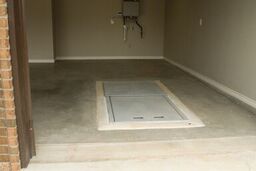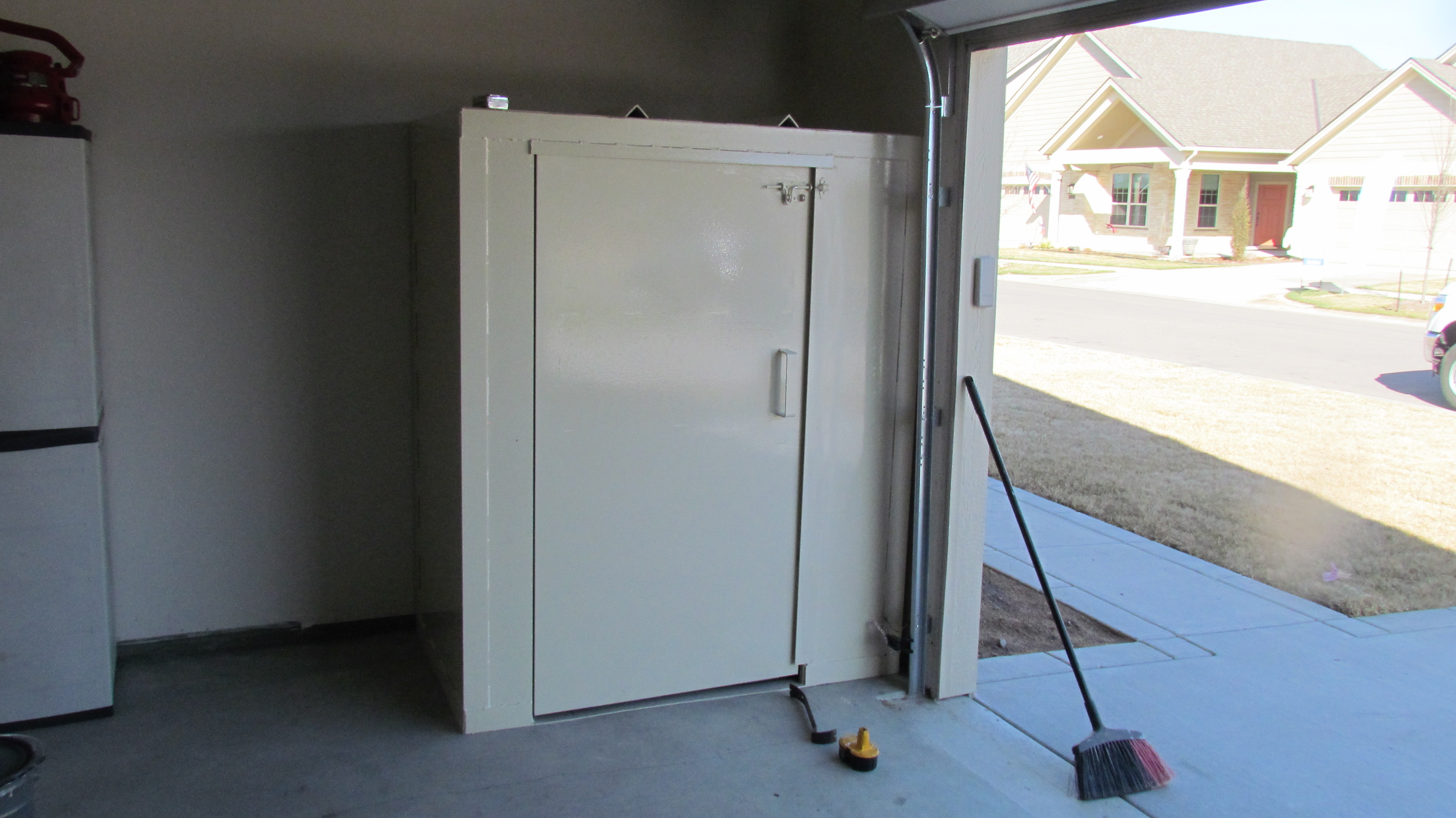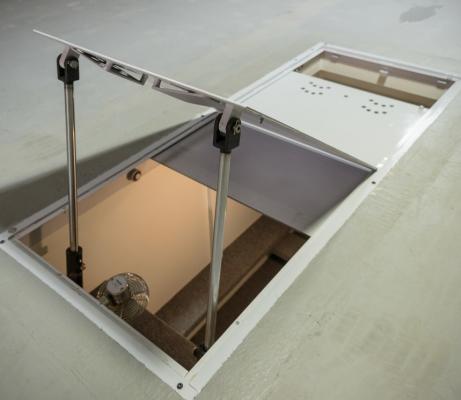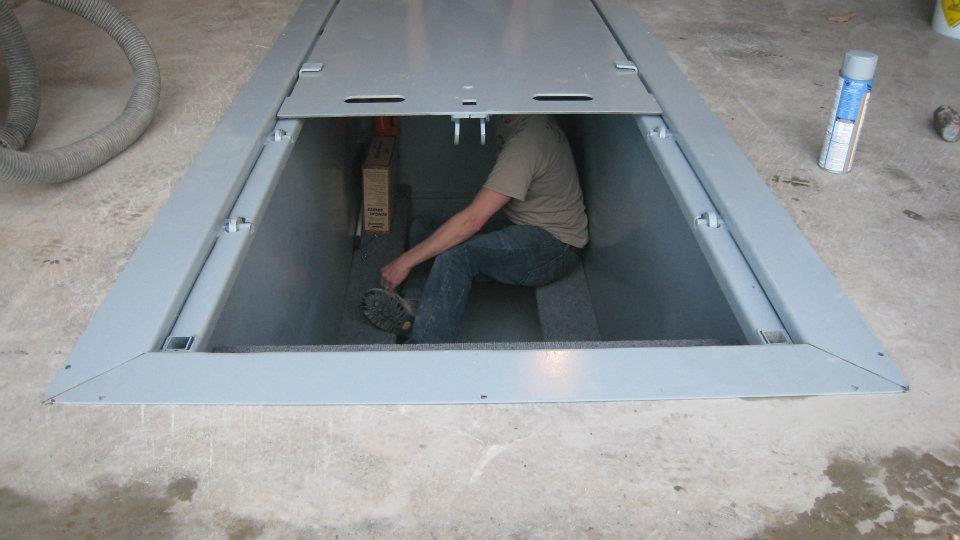Why Under Garage Floor Storm Shelters Are Essential
In regions prone to severe weather, such as tornadoes or hurricanes, having a reliable storm shelter can be a matter of life and death. Among the various types available, under-garage floor storm shelters offer unique advantages that make them essential for homeowners looking to prioritize safety.
- Maximum Protection: Under garage floor storm shelters provide unparalleled protection by being located beneath the solid foundation of your home. This positioning offers a sturdy barrier against flying debris and structural damage caused by powerful storms.
- Convenient Access: Unlike above-ground shelters that may require a dash across the yard in dangerous weather, garage floor shelters offer immediate access from within the safety of your home. This proximity can be crucial during emergencies when every second counts.
- Space Optimization: Utilizing the space beneath your garage floor allows for efficient use of property while minimizing visual impact. This discrete placement ensures that your shelter remains unobtrusive yet readily available for use when needed.
- Enhanced Property Value: Investing in an under-garage floor storm shelter can increase the appeal and resale value of your home. Potential buyers often prioritize safety features, making a built-in shelter a valuable asset in real estate markets prone to severe weather.
- Peace of Mind: Knowing that you have a secure and accessible shelter provides peace of mind for you and your family, especially during the storm season. This assurance allows you to focus on staying safe and prepared rather than worrying about the lack of adequate protection.
- Long-Term Savings: While the initial cost of installing an under garage floor storm shelter may seem significant, the long-term savings in potential property damage and, more importantly, lives saved, far outweigh the investment.

Key Features of Under Garage Floor Storm Shelters
When considering the design of an under garage floor storm shelter, several key features contribute to its effectiveness and safety. Understanding these elements is crucial for homeowners looking to invest in a reliable shelter for protection during severe weather events.
Reinforced Construction: A robust construction is paramount for withstanding the forces exerted during a storm. Look for shelters made from reinforced materials such as steel or concrete, capable of withstanding high winds and impact from debris.
Secure Entry Mechanism: The entrance to the shelter should feature a secure locking mechanism to prevent accidental opening during a storm. Additionally, consider options such as hydraulic doors for smooth and reliable operation, even under duress.
Ventilation and Air Circulation: Proper ventilation is essential for ensuring a safe and comfortable environment inside the shelter. Look for shelters equipped with ventilation systems designed to provide a constant supply of fresh air while preventing the ingress of debris or harmful gases.
Adequate Seating and Amenities: While safety is the primary concern, comfort during extended stays in the shelter is also important. Choose a shelter that provides ample seating and storage space for essentials such as water, food, and medical supplies.
Emergency Communication: In the event of an extended stay in the shelter, it’s crucial to have a means of communication with the outside world. Consider shelters equipped with emergency communication devices such as two-way radios or cellular signal boosters.
Accessibility Features: Accessibility is a key consideration for households with elderly or disabled members. Look for shelters designed with features such as handrails, non-slip flooring, and ramps to ensure everyone can safely enter and exit the shelter.
Steps to Safely Implementing Your Storm Shelter
Installing an under-garage floor storm shelter requires careful planning and execution to ensure its effectiveness and safety during a severe weather event. By following these essential steps, homeowners can safely implement their storm shelter and provide peace of mind for themselves and their families.
Site Selection and Preparation: Begin by selecting a suitable location within the garage for the shelter. Consider factors such as accessibility, structural integrity, and proximity to utilities. Prepare the site by clearing any obstructions and ensuring a level foundation.
Professional Assessment and Permits: Before proceeding with installation, it’s essential to enlist the services of a qualified engineer or contractor to assess the structural integrity of the garage floor and ensure compliance with local building codes. Obtain any necessary permits before commencing work.
Excavation and Foundation Construction: Excavate the designated area within the garage floor to accommodate the shelter. Construct a sturdy foundation using reinforced concrete to support the weight of the shelter and withstand the forces exerted during a storm.
Shelter Installation and Anchoring: Once the foundation is in place, carefully lower the shelter into position using specialized equipment or professional assistance. Secure the shelter to the foundation using anchor bolts or other approved methods to prevent displacement during a storm.
Integration with Utilities: If desired, integrate the shelter with essential utilities such as electricity, ventilation, and communication systems. Work with licensed professionals to ensure proper installation and compliance with safety regulations.
Final Inspection and Testing: Upon completion of installation, conduct a thorough inspection of the shelter to verify structural integrity and functionality. Test all systems and components to ensure they operate as intended during simulated storm conditions.
Different Types of Storm Shelters for Your Garage
When it comes to selecting a storm shelter for your garage, various options are available, each with its own set of features and benefits. Understanding the differences between these shelters can help homeowners make an informed decision based on their specific needs and preferences.
Under Garage Floor Shelters: Under garage floor shelters are built directly beneath the garage floor, offering discrete yet accessible protection during severe weather events. These shelters provide maximum security and convenience, with minimal visual impact on the property.
Above-Ground Safe Rooms: Above-ground safe rooms are standalone structures typically constructed from reinforced materials such as steel or concrete. While not integrated into the garage floor, these shelters offer similar levels of protection and can be installed indoors or outdoors.
Garage-Embedded Tornado Doors: Garage-embedded tornado doors are specialized doors designed to provide storm protection without the need for a dedicated shelter. These doors are installed within the existing garage opening and feature reinforced construction to withstand high winds and debris impact.
Portable Storm Shelters: Portable storm shelters are prefabricated units that can be temporarily installed within the garage or moved to different locations as needed. While not as robust as permanent shelters, these units offer flexibility and convenience for homeowners in areas with infrequent severe weather.
Custom-Built Solutions: For homeowners with specific requirements or space limitations, custom-built storm shelters offer a tailored solution to meet their needs. These shelters can be designed to integrate seamlessly into existing structures or utilize unconventional spaces within the home.
Cost Considerations: When comparing options, it’s essential to consider not only the initial cost of the shelter but also long-term maintenance and operational expenses. Factor in additional costs such as installation, permits, and any necessary modifications to the property.
Pros and Cons of Under Garage Floor Shelters
Under garage floor storm shelters offer a range of benefits that make them an attractive option for homeowners seeking reliable protection during severe weather events. However, like any investment, it’s essential to weigh the pros and cons before making a decision.
Pros:
- Maximum Protection: Built beneath the garage floor, these shelters provide unmatched security against flying debris and structural damage.
- Convenient Access: Immediate access from within the home ensures quick entry during emergencies, minimizing exposure to danger.
- Space Optimization: Discrete placement preserves property aesthetics while utilizing space efficiently.
- Enhanced Property Value: Built-in shelters can increase the appeal and resale value of the home, particularly in storm-prone areas.
- Peace of Mind: Knowing you have a secure shelter readily available instills confidence and reduces anxiety during storm season.
- Long-Term Savings: While the initial cost may be significant, the potential savings in property damage and lives saved justify the investment.
Cons:
- Costly Installation: Installing an under garage floor shelter involves excavation and construction, resulting in higher upfront costs compared to other options.
- Limited Space: Depending on the size of the garage, the available space for the shelter may be constrained, limiting seating and storage capacity.
- Professional Installation Required: Due to the complexity of installation, professional assistance is often necessary, adding to the overall cost.
- Potential Disruption: Excavation and construction may disrupt daily activities and require temporary relocation of vehicles and belongings.
- Maintenance Needs: Regular maintenance is necessary to ensure the shelter remains in optimal condition and ready for use during emergencies.
- Regulatory Compliance: Compliance with local building codes and regulations may impose additional requirements and costs during installation.
Ensuring Your Shelter Meets Safety Standards
When installing an under garage floor storm shelter, adherence to regulatory standards and building codes is essential to ensure its effectiveness and safety. Understanding these requirements and obtaining necessary approvals is crucial for homeowners looking to protect their families during severe weather events.
Building Codes and Regulations: Local building codes dictate the specifications and installation requirements for storm shelters, including structural design, anchoring methods, and ventilation standards. Familiarize yourself with these regulations to ensure compliance throughout the installation process.
Professional Assessment: Before installing a storm shelter, enlist the services of a qualified engineer or contractor to assess the structural integrity of your garage floor and determine the suitability of the site. Their expertise can help identify potential issues and ensure the shelter meets regulatory standards.
Permitting Process: Obtain any necessary permits or approvals from local authorities before commencing work on your storm shelter. This may involve submitting detailed plans and specifications for review to ensure compliance with building codes and zoning regulations.
Inspections and Certifications: Throughout the installation process, schedule inspections with municipal building inspectors to verify compliance with regulatory standards. Once completed, obtain any required certifications or documentation to demonstrate the shelter’s compliance and safety.
Manufacturer Guidelines: Follow manufacturer guidelines and recommendations for installation to ensure the shelter performs as intended during a storm. Deviating from these instructions may compromise safety and regulatory compliance.
Continued Compliance: After installation, ensure ongoing compliance with regulatory standards by adhering to maintenance requirements and conducting periodic inspections. Stay informed about any updates or changes to building codes that may affect your storm shelter.
Tips for Keeping Your Storm Shelter in Top Condition
Maintaining your under garage floor storm shelter is essential to ensure its readiness and effectiveness during severe weather events. By following these tips and guidelines, homeowners can keep their shelters in top condition and provide reliable protection for their families.
Regular Inspections: Conduct regular inspections of your storm shelter to check for signs of damage, deterioration, or corrosion. Pay attention to structural integrity, door seals, ventilation systems, and emergency communication devices.
Cleanliness and Organization: Keep your shelter clean and well-organized to facilitate quick access during emergencies. Remove any clutter or debris that may obstruct entry or compromise safety, and periodically clean surfaces to maintain hygiene.
Testing Systems and Equipment: Test all systems and equipment within the shelter, including ventilation fans, lighting, emergency communication devices, and backup power sources. Ensure they are in proper working condition and replace any faulty components as needed.
Seal Maintenance: Check and maintain the seals around the shelter door to prevent water infiltration, air leaks, and pest intrusion. Replace worn or damaged seals promptly to maintain a secure and weatherproof environment inside the shelter.
Emergency Supplies and Provisions: Regularly inspect and replenish emergency supplies and provisions stored within the shelter, including water, non-perishable food, first aid supplies, and personal protective equipment. Rotate perishable items according to expiration dates to ensure freshness.
Emergency Preparedness Training: Conduct regular emergency preparedness drills with your family to practice accessing and using the storm shelter quickly and efficiently. Review evacuation procedures, emergency contacts, and communication protocols to ensure everyone is prepared for a worst-case scenario.
Above Ground Storm Tornado Shelters – Concrete or Steel Shelters
Garage Storm and Tornado Shelter Valley Storm Shelters
Tornado Indoor Underground Storm Shelters Stronger Anchored
In-Ground Tornado Shelter Tornado shelter, Safe room, Diy home
Under Garage Infinity Shelter
Underground Garage Storm Shelter Installation
Related Posts:











